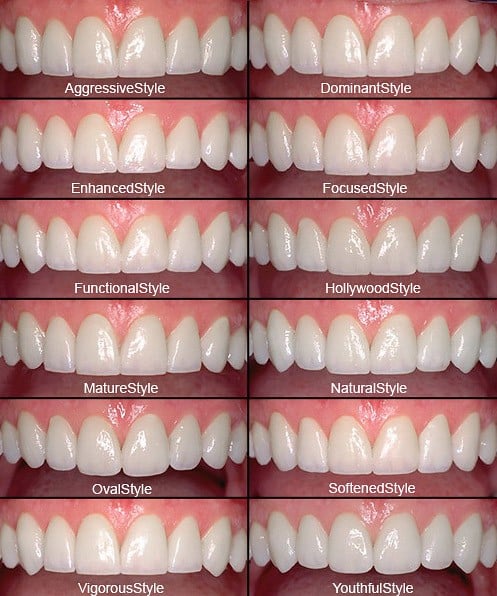Porcelain Crowns for a Strong, Beautiful Smile at Sarasota Dentistry
Porcelain crowns are a strong, durable porcelain which reinforces, or strengthens, weak, chipped, broken or cracked teeth. This durable porcelain is also resistant to stains and can be fabricated in a variety of tooth colored shades. Porcelain crowns are commonly used to perform smile makeovers with bleach white porcelain crowns but the color of the porcelain is variable based on the patients desires. If you’re dealing with a cracked, chipped, or severely worn tooth—or simply want to enhance your smile—CEREC® porcelain crowns at Sarasota Dentistry offer a strong, stain-resistant, and natural-looking solution. Dr. Hank Michael and his team specialize in same-day porcelain crowns in Sarasota, helping patients restore form and function without the hassle of multiple visits or temporary crowns.
Located in Sarasota, FL, we proudly serve patients from Siesta Key, Gulf Gate Estates, Palmer Ranch, Venice, and surrounding communities.
What Are Porcelain Crowns? Are There Different Types of Porcelain Crowns?
Porcelain crowns are a thin layer of porcelain designed to reinforce, or strengthen, a tooth that has been weakened by cracks, chips, wear, fractures, decay or a root canal therapy. They act very much like the rings on a wine barrel, holding the core of the tooth securely together and thus preventing a catastrophic fracture of the root. Porcelain crowns fit on the core of a tooth like a hat fits on your head. The tooth’s core is shaped so that the porcelain crowns slides over the core of the tooth and then meets the tooth at the gum-line – covering any exposed root surface.
There are few types of porcelain crowns. There are feldspathic porcelain crowns, leucite reinforced porcelain crowns(Empress), lithium disilicate porcelain crowns(Emax), and porcelain fused to zirconia(PFZ). While most all of them will work, some may be better suited for a particular application depending on a number of factors. Factors such as clenching and grinding, which would require a stronger porcelain crowns. Factors such as a very dark core or metal post in the core of the tooth, which would require a porcelain crown that could hide, or mask, the discolored tooth core. It is important to note that those old porcelain fused to metal (PFM) crowns ARE NOT considered a porcelain crown. While many of the old PFM are functioning just fine, these crowns are usually not very nice looking… especially when you see the metal showing at the gum line. Porcelain crowns do not have the ugly metal showing at the gum line. Sarasota Dentistry places an emphasis on metal-free porcelain crowns, however, there a few instances where metal reinforcement are indicated which is a rare instance.
CEREC same day, or one-visit porcelain crowns are lithium disilicate (Emax). At this present time, that is the superior porcelain crown of choice for in-office restorations.
Who are Porcelain Crowns For?
Porcelain crowns are routinely used to restore cracked and broken teeth. They are also commonly utilized in cosmetic and implant dentistry to create smile makeovers and to restore dental implants. Porcelain crowns are a wonderful material when performing a smile makeover because you can lengthen teeth, rotate teeth, close spaces, adjust the occlusion, and whiten the teeth all with porcelain. You can literally create the smile of your dreams and make it a reality with porcelain crowns and veneers. These smiles aren’t just beautiful either, they are extremely durable and long lasting. Porcelain crowns can also be used to restore function in a severely worn dentition. This may be caused by clenching and grinding or it may be caused by acid reflux or some other oral habits that lead to tooth erosion. Nevertheless, porcelain crowns can be used to build these teeth back up to normal aesthetics and function. Temporomandibular joint disorder or TMJ can also be treated utilizing porcelain crowns when the cause of the TMJ is malocclusion or a crooked bite. So whether it is a single broken tooth or the need for a full-mouth reconstruction, porcelain crown a wonderful treatment option.

Porcelain Crown Shapes/Styles

According to the LVI Smile Library*, porcelain veneers can be classified into 12 different styles describing the characteristic smile they wish to portray.
- Aggressive–square, round central and lateral incisors with gently curved or semi-straight canines. This is perfect for men as well as women who may want to project a rather strong personality.
- Dominant–square, round central incisors, rounded far corner of lateral incisors, and sharply pointed canines; lateral incisors are chipped a little bit higher than the central incisors.
- Enhanced–slightly rounded edges of both central and lateral incisors with the lateral incisors slightly higher or shorter than the central incisors to give it a gull-wing appearance; canines are bluntly pointed. This style of smile particularly is one of the most popular styles of porcelain veneers chosen by females those who wish to compete in beauty pageants as well as engage in photo-op sessions where a perfectly looking pearly whites is a must.
- Focused–similar to an Enhanced Style unless the central incisors are square without rounded edges.
- Functional–similar to an Enhanced Style except the canines are more pointed.
- Hollywood–similar to an Aggressive Style but with the lateral incisors slightly offset or shorter from the central incisors. This is one of the most sought after porcelain veneer styles among males as it provides an excellent show of teeth without being overly aggressive.
- Mature–similar to an Aggressive Style but with the canines slightly more pointed.
- Natural–similar to an Enhanced Style but with the canines more aggressively pointed
- Oval–similar to an Aggressive style unless all the incisors and canines take on a more rounded or oval shape.
- Softened–similar to an Oval Style but with a less pronounced curvature of the edges of the teeth.
- Vigorous–similar to an Aggressive Style unless the canines are more pronounced, is protruding well into the oral cavity like a fang.
- Youthful–similar to an Oval Style but with more pronounced and protruding canines like in a Vigorous Style.
*Developed by Dr. William Dickerson of the Las Vegas Institute for Advanced Dental Studies.

